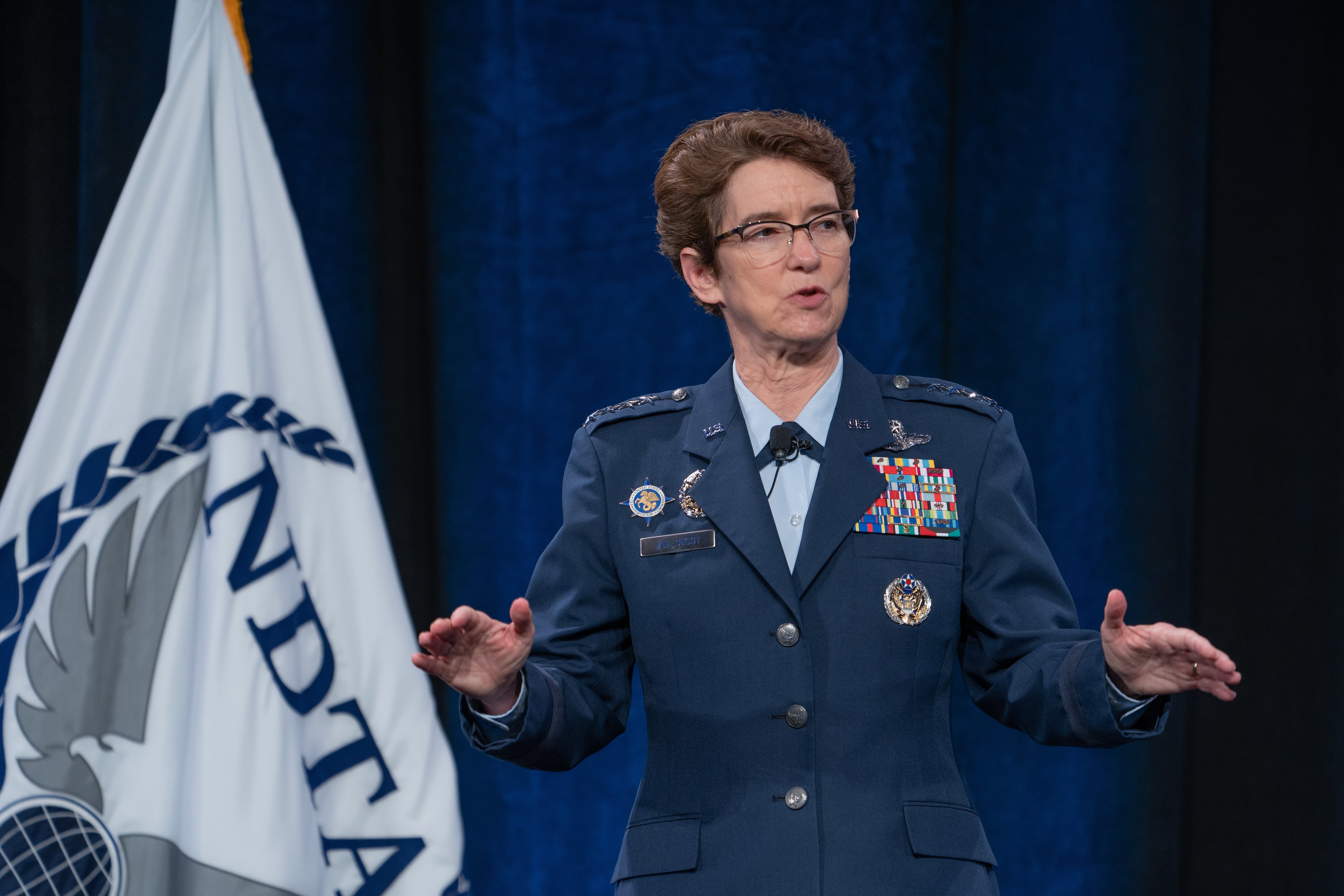WASHINGTON — The U.S. government may require commercial planes and ships conducting military lift operations to carry technology that lets them navigate and communicate even when an adversary is trying to jam their systems, according to the head of U.S. Transportation Command.
This requirement for carry-on kit for sealift and airlift partners comes amid the command’s effort to mature its concept for sustaining the joint force in a fight in a contested environment.
Gen. Jacqueline Van Ovost told reporters Friday that last year’s collaboration between military and commercial aircraft to evacuate at-risk Afghans as the Taliban took control of their country foreshadowed what could happen in the Pacific region, which is a larger area and likely includes more dangerous airspace. During the withdrawal, military aircraft flew in and out of contested airspace in Kabul, but quickly offloaded passengers to commercial planes for a longer flight out of the region.
“As we work with our commercial carriers and the [Federal Aviation Administration], we think about where they could go and then where they would transload onto a military-specific platform for the last thousand tactical miles. Those are the kinds of concepts of operations we’re working with the carriers,” she said ahead of an Oct. 17 speech at the fall meeting of the National Defense Transportation Association.
Last year, for the third time since its 1951 creation, the Civil Reserve Air Fleet was activated. The organization is part of an agreement between civilian airlines and the government to augment military airlift assets when needed. A comparable Maritime Security Program exists on the maritime side to supplement government-owned sealift ships.
On the maritime side, Van Ovost said civilian mariners have a long history of sailing into dangerous waters to resupply military forces, and she expects that will continue if a conflict erupted with China or another adversary. However, she acknowledged TRANSCOM can equip these ships for safer and more effective operations.
Her command is studying how to place a Navy reservist onboard to serve as a tactical adviser, working alongside the ship’s master to maneuver in a contested environment as well as advising on emissions control, secure communications, and situational awareness in a denied or degraded space.
For both commercial ships and planes, Van Ovost said, TRANSCOM wants to develop carry-on kits to bring Link 16 connectivity, secure navigation and other capabilities.
“China has tailor-made their capabilities to try to disrupt our lines of communication, whether that be sea or air or land. They don’t want us to mobilize, to deploy; they don’t want us to get into theater, so they’ll be looking for ways to deny, degrade or delay our ability to even leave the United States, where 85% of the force elements reside,” she added.
TRANSCOM is working with U.S. Northern Command and U.S. Cyber Command to understand what threats these commercial companies could face at home that might prevent them from mobilizing, including cyberattacks at airports as well as denial of communications and navigation closer to American shores.

Once personnel, trucks, fuel and materiel make it to theater, it will be tougher to get them to the point of need, Van Ovost said. The armed services — the Navy and Marine Corps in particular — are looking at new operating concepts that call for smaller units to be more dispersed around the theater, creating a greater need for the intra-theater movement of supplies.
The command’s analysis directorate recently briefed her on the latest Future Deployment and Distribution Assessment, which will be signed soon, according to TRANSCOM spokesman Scott Ross. This eighth iteration of the research and analysis effort is set in the 2030-2035 time frame and considers both inter-theater lift to move gear to the Pacific and intra-theater lift to move gear to the specific point of need.
Ross said this latest study shows the need for airlift and sealift capabilities with a mix of volume, range and other attributes.
Van Ovost specifically said she’s eyeing the Navy’s upcoming Light Amphibious Warship and Next-Generation Logistics Ship programs. Even though they’re under development for the Navy and Marine Corps’ operational needs, she said they may play an important role in joint force intra-theater lift.
The general also said she and other leaders are discussing “a multimodal joint solution, such that when they’re done with the [light amphibious warship], how can we use that to move other things around in the Pacific? We can no longer be really service-centric in that last thousand tactical miles — that’s what our study uncovered. We’ve got to be more joint in our solutions.”
The ability to get goods to their final destination on time in a denied environment “is concerning,” she admitted, but exercises next year will try to address any remaining gaps in that capability and prove that innovative solutions — such as adding kit to a commercial tanker so it can offload fuel at sea without stopping at a port — can overcome any threats China pay pose.
To identify remaining gaps, “we are absolutely following the scheme of maneuver for the Marine Corps and for the Navy, especially on how they need to be replenished, their timelines to meet the joint warfighting concept, and then what drives the capabilities” that TRANSCOM will pursue in the coming years.
Megan Eckstein is the naval warfare reporter at Defense News. She has covered military news since 2009, with a focus on U.S. Navy and Marine Corps operations, acquisition programs and budgets. She has reported from four geographic fleets and is happiest when she’s filing stories from a ship. Megan is a University of Maryland alumna.






